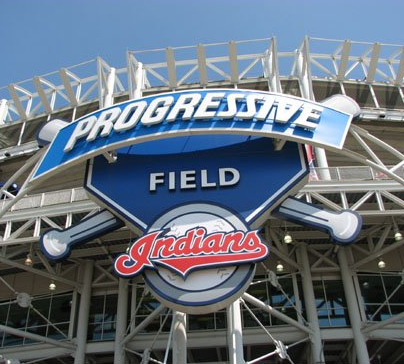Cleveland Indians to change team name
Anthony Castrovince
MLB.com, December 14, 2020
Team owner Paul Dolan confirmed the decision on Monday, following a process that involved conversations with fans, players, local and national Native American groups, Cleveland civic leaders, corporate sponsors and leading Native American researchers.
“Our role is to unite the community,” Dolan told MLB.com. “There is a credible number of people in this community who are upset by our name, are hurt by our name, and there is no reason for our franchise to bear a name that is divisive.”
The Secret History of Chief Wahoo
Brad Ricca
Belt Magazine, June 19, 2014
It turns out that much—much—of what we think we know about Chief Wahoo is wrong. Even the origin of the name “Indians” is debated over.
There is an old tone at work here. The focus of the “poem” on his war paint, belly, and nose uses praise for his play as an excuse for casual racism. They didn’t even need cartoons in 1897. During Sockalexis’ magic May, the paper riffed on the infamous words of General Philip Sheridan, stating “The man who said that there are no good Indians except dead Indians … surely never saw one Louis Sockalexis.”
Turn-of-the-century sportswriters really wrote like that. Even when they clap, they get in their digs.
Hundreds Of Schools Are Still Using Native Americans As Team Mascots
Hope Allchin
FiveThirtyEight, October 12, 2020
The crux of their argument is simple: Native mascots dehumanize Indigenous people by employing disparaging stereotypes of Native Americans that cause real harm. This claim has been repeatedly supported by research, and the causes of that harm extend far beyond the Washington football franchise.
The Cleveland Indians, Louis Sockalexis, and The Name
Joe Posnanski
NBC Sports, March 18, 2014
There was hardly a mention of Sockalexis that did not include some reference to collecting scalps or wampum or General Custer or, in later coverage, firewater. War whoops followed him everywhere. The favorable stories usually involved some sort of bizarre Indian tale.
This story — and you will note that even Lewis refers to it as a “story” [in 1948] — was cleaned up and recast and pushed relentlessly by writers and, especially, the team (especially as Native Americans and others began to challenge the rightness of using names like Indians or, even more, mascots like the red-faced Chief Wahoo).
…contrary to the story told so often, there was no team-naming contest this time. Papers did solicit ideas from fans, but team owner Charles Somers put together a group of Cleveland sportswriters from the four papers and told them to come up with a name. They are the ones who chose the Cleveland Indians and there is no indication that they chose a name entered by a fan.
One: A year earlier, the Boston Braves had a miraculous season — coming from last place on July 4 to win the pennant — and so Native American names were in. Two: It was a glorious opportunity for HI-larious Native American jokes and race-specific cliches and insults that fit well in headlines.
You will notice there is no mention in this cartoon of Louis Sockalexis, nor was there in any of the national stories about the name change. In fact, in my national search of more than 300 national newspapers, I could not find a single mention of Louis Sockalexis in the entire year of 1915.
Why Cleveland Indians' name change is a half-century overdue
Jeff Passan
ESPN, December 12, 2020
What has happened in the past six months -- first Washington's NFL team dropping the Redskins nickname (and pretense) and this week, Cleveland planning to rid itself of its nickname like it already has the associated logo -- may feel novel and progressive, a function of enlightenment, a declaration of wokeness. It is none of these things. It is a reminder that the same reasonable argument Amsterdam proffered has been around for half a century, and the highest levels of sports simply ignored it. The fact that Washington and Cleveland lasted with their nicknames as long as they did is a pathetic failure.
Critical Role Just Introduced Its Version of Batman
Christian Hoffer
ComicBook.com, December 9, 2019
The Owlbear is a multiclass Rogue/Barbarian who doles out justice while dressed as an owlbear…
As for why he chose to dress an owlbear, the Owlbear explained that "two of the world’s greatest predators, the owl and the bear, while frightening, strike nowhere near as much terror as that alliance between them."







